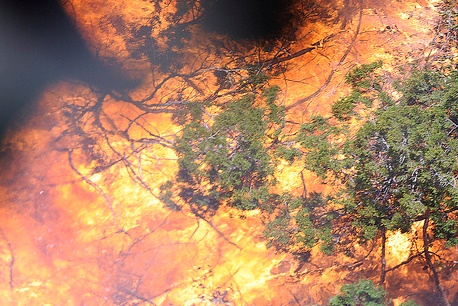
In a season that has produced so many catastrophic natural disasters, the most recent wildfires striking Northern California have spread unpredictably and rapidly leaving 23 dead and scores missing.
The fast-moving wildfires of unknown origin that began on Sunday night, October 8, continue to destroy lives and property. CNN reports that unusually strong winds, a nightfall startup, dry vegetation, and seasonably dry conditions as the culprits behind the devastating wildfires.
ICMA members and staff express concern and support for the victims in Santa Rosa and Sonoma and Napa counties, and our thoughts go out to the thousands of individuals and their families who have been displaced, injured, or tragically killed during the disastrous wildfires. ICMA Executive Director Marc Ott in a letter to affected California managers said he offered "ICMA’s support as you deal with the enormous challenge of evacuating and helping those injured, controlling the immediate blazes, and restoring communications as you begin the long rebuilding process."
Greg Hermann, acting assistant city manager, San Luis Obispo, and president of ICMA affiliate Cal-ICMA reached out to Santa Rosa City Manager Sean McGlynn on October 10. At that time, the city was in desperate need of building inspectors and public information officers, and ICMA assisted the League of California Cities in soliciting personnel for a 72-hour recovery operation. We thank all our members and their staffs who so quickly responded to Sean’s SOS.
Going forward, members are asked to work with their local emergency management staff to channel all offers of assistance to Santa Rosa and the Napa/Sonoma County area. The American Red Cross has set up a page of resources and donation information.
ICMA has compiled a list of mitigation, evaluation, and recovery resources contain information for communities that are dealing with wildfires:
1.This case study provides a comprehensive example from Alachua County, Florida, of a wildfire mitigation program.
2.An important aspect of preparing for any disaster is developing an evacuation plan. This premium content from ICMA and the Alliance for Innovation provides an example wildfire evacuation model from Colorado Springs, Colorado.
3.The Federal Emergency Management Agency (FEMA), as part of America’s PrepareAthon, developed this resource on how to prepare for a wildfire. This document provides insights for local government officials, citizens, and business owners. On the last page of the document is a list of other useful resources.
4.The Texas Forest Service developed this wildfire preparedness checklist. A checklist is an easy way to ensure that your citizens are prepared for disasters.
5.This ICMA premium content outlines the Schultz Community Recovery (SCR) project. The SCR is an innovative project to mitigate the devastating effects of post-wildfire flash flooding in the area near Flagstaff, Arizona.
6.Headwater Economics, an independent, nonprofit research group whose mission is to improve community development and land management decisions in the West, released this report in 2013 on the rising costs of wildfire protection.
7.Headwater Economics published this online document on local responses to wildfire risks and costs. The document provides interesting insights and lessons learned from multiple local government case studies.
New, Reduced Membership Dues
A new, reduced dues rate is available for CAOs/ACAOs, along with additional discounts for those in smaller communities, has been implemented. Learn more and be sure to join or renew today!
